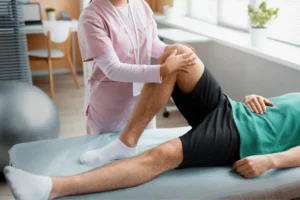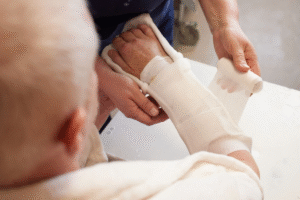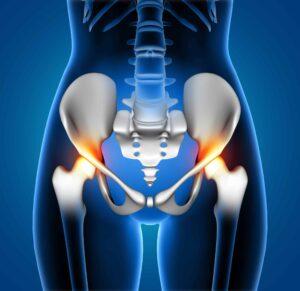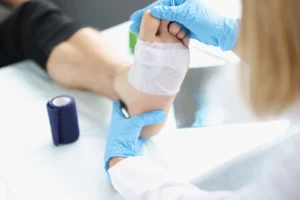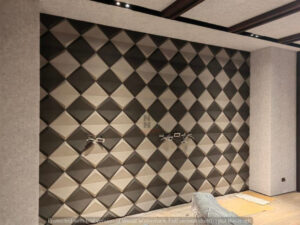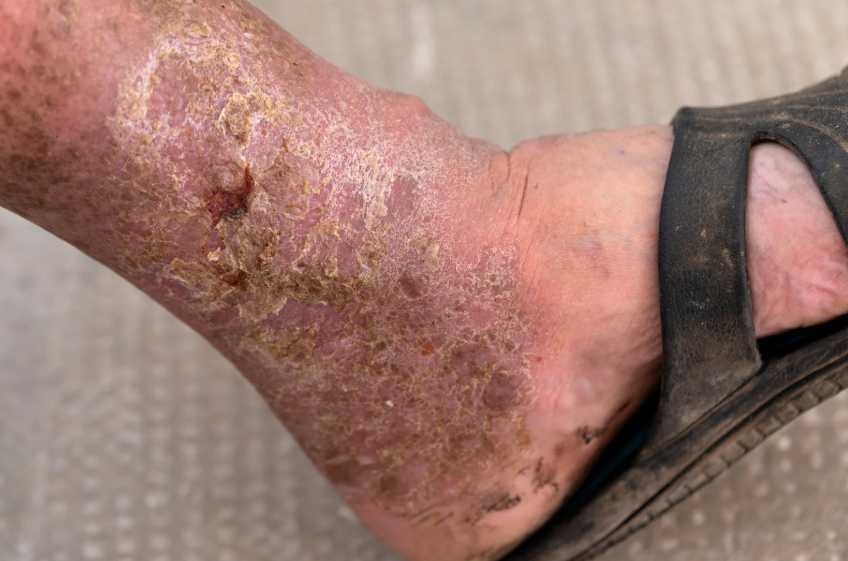Forefoot ulcers are a serious concern, especially for individuals with diabetes or poor circulation. These wounds, often caused by excessive pressure or friction, can lead to severe complications if left untreated. Preventing recurrence is essential for maintaining foot health and avoiding long-term issues. Orthopedic treatment for forefoot ulcers plays a crucial role in reducing pressure, improving foot function, and ensuring proper healing. This article explores effective orthopedic solutions to prevent the recurrence of forefoot ulcers and promote overall foot health.
Understanding Forefoot Ulcers
Forefoot ulcers are open sores that develop on the ball of the foot or toes due to prolonged pressure, friction, or underlying medical conditions. Individuals with diabetes, neuropathy, or poor circulation are particularly at risk. If not properly managed, these ulcers can lead to infections, tissue damage, and even amputations.
One of the primary reasons for recurrence is inadequate pressure distribution on the foot. Orthopedic treatment for forefoot ulcers addresses this issue by offloading pressure from vulnerable areas, reducing friction, and providing support to prevent further damage. Understanding the causes and risk factors of forefoot ulcers is the first step toward effective prevention.
The Role of Orthopedic Treatment in Preventing Forefoot Ulcers
Preventing the recurrence of forefoot ulcers requires a multi-faceted approach that includes proper foot care, lifestyle adjustments, and specialized medical interventions. Orthopedic treatment for forefoot ulcers is designed to alleviate pressure on the affected areas, enhance mobility, and promote healing.
Orthopedic interventions such as custom orthotics, specialized footwear, and offloading techniques are essential for individuals who have a history of foot ulcers. These treatments help redistribute weight, protect vulnerable skin, and ensure that the foot functions optimally to prevent further injury.
Orthopedic Solutions for Preventing Recurrence
Custom Orthotics and Insoles
Custom orthotics are specially designed shoe inserts that help reduce pressure on the forefoot, provide arch support, and improve foot alignment. Orthopedic treatment for forefoot ulcers often includes the use of orthotics to prevent excessive pressure on ulcer-prone areas.
These insoles are made from materials that cushion the foot while redistributing weight evenly. Patients who wear properly fitted orthotics experience reduced discomfort, improved walking patterns, and a significantly lower risk of developing new ulcers.
Diabetic and Orthopedic Footwear
Wearing the right footwear is a key aspect of orthopedic treatment for forefoot ulcers. Orthopedic shoes are designed with extra depth, soft insoles, and seamless interiors to reduce friction and prevent pressure sores.
Diabetic footwear, in particular, is beneficial for individuals with neuropathy, as it helps prevent unnoticed injuries that could lead to ulceration. Choosing well-fitted, cushioned shoes with wide-toe boxes and shock-absorbing soles is essential for protecting the feet and preventing ulcer recurrence.
Offloading Techniques
Offloading is a crucial component of orthopedic treatment for forefoot ulcers, as it reduces pressure on the affected area, allowing wounds to heal properly. Various offloading techniques can be used to prevent recurrence:
- Total Contact Casts (TCCs): A specialized cast that evenly distributes weight and relieves pressure from ulcerated areas.
- Removable Walking Boots: These boots provide support while protecting the foot from excessive strain.
- Offloading Shoes: Designed to shift weight away from the forefoot, reducing stress on ulcer-prone areas.
By incorporating these offloading techniques, patients can significantly reduce the chances of ulcer recurrence and maintain better foot health.
Physical Therapy and Foot Strengthening Exercises
Strengthening the muscles in the feet and lower legs plays a vital role in preventing foot ulcers. Orthopedic treatment for forefoot ulcers often includes physical therapy exercises that enhance circulation, improve foot flexibility, and correct walking patterns.
Simple exercises such as toe curls, foot stretches, and balance training can help reduce excessive pressure on the forefoot and improve overall foot function. Regular physical activity also promotes better blood flow, reducing the risk of complications associated with poor circulation.
Medical Interventions for Long-Term Prevention
In addition to orthopedic treatments, medical interventions are necessary for patients at high risk of ulcer recurrence. Regular foot screenings, proper wound care, and advanced medical procedures can help prevent complications.
Some common medical interventions include:
- Wound Care Management: Cleaning, dressing, and monitoring ulcers to prevent infections.
- Tendon Lengthening Procedures: Surgical intervention to correct foot deformities that contribute to ulcer formation.
- Reconstructive Surgery: For severe cases, surgery may be required to realign bones and relieve pressure on vulnerable areas.
Working closely with podiatrists and orthopedic specialists ensures that individuals receive comprehensive care tailored to their specific needs.
Daily Foot Care Tips for Ulcer Prevention
Maintaining proper foot hygiene is essential in orthopedic treatment for forefoot ulcers. Simple daily practices can prevent wounds from forming and ensure that existing ulcers do not worsen:
- Wash and Dry Feet Daily: Keeping feet clean prevents infections.
- Moisturize to Prevent Cracks: Dry skin can lead to sores and ulceration.
- Inspect Feet Regularly: Early detection of pressure points helps prevent complications.
- Trim Nails Properly: Avoid injuries that can lead to infections.
By following these foot care tips, individuals can maintain healthy feet and prevent the recurrence of ulcers.
Lifestyle Changes to Reduce Ulcer Risk
Lifestyle choices significantly impact foot health. Adopting habits that reduce stress on the feet can enhance the effectiveness of orthopedic treatment for forefoot ulcers.
Maintain a Healthy Weight
Excess body weight increases pressure on the forefoot, contributing to ulcer formation. A balanced diet and regular exercise can help maintain an optimal weight and reduce foot strain.
Stay Active
Low-impact exercises such as swimming, cycling, and walking improve circulation and foot strength. Staying active reduces the risk of foot ulcers and promotes overall well-being.
Choose the Right Footwear for Different Activities
Wearing appropriate shoes for walking, running, and standing for long periods can prevent excessive pressure on the feet. Ensuring that shoes fit properly and provide adequate support is essential for foot health.
Takeaway
Preventing the recurrence of foot ulcers requires a proactive approach that includes orthopedic interventions, proper footwear, and daily foot care. Orthopedic treatment for forefoot ulcers provides effective solutions to reduce pressure, promote healing, and prevent complications. By incorporating custom orthotics, specialized footwear, and offloading techniques, individuals can maintain healthy feet and avoid the recurrence of ulcers. Regular check-ups with specialists and adopting healthy lifestyle choices further enhance foot health and long-term well-being. Taking these preventive measures ensures that individuals can walk comfortably and confidently without the fear of recurring foot ulcers.

